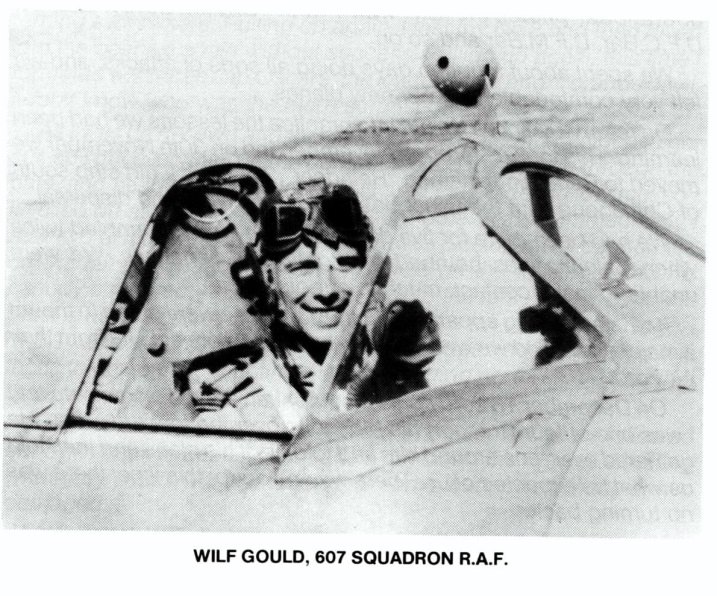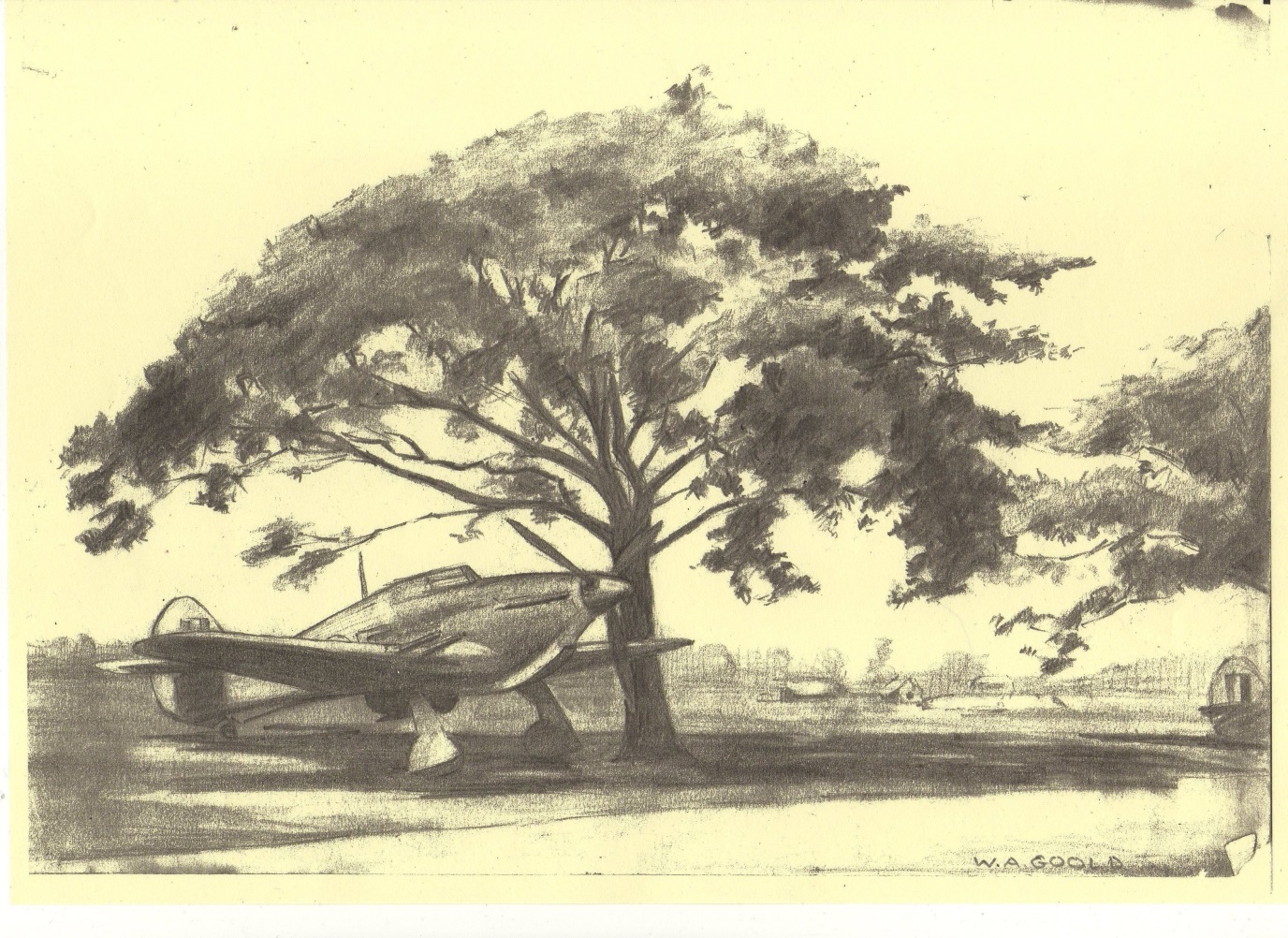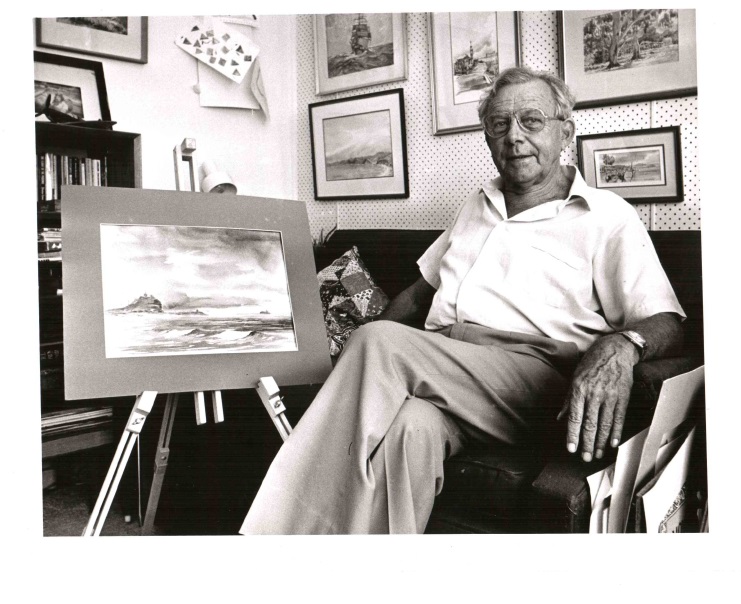FLTLT Wilfred Arthur Goold 403135
DFC



| Squadron/s | 607 SQN RAF |
| Rank On Discharge/Death | Flight Lieutenant (FLTLT) |
| Nickname | Wilf |
| Mustering / Specialisation | Pilot |
| Date of Birth | 02 Feb 1919 |
| Date of Enlistment | 09 Dec 1940 |
| Contributing Author/s | By Wilfred Gould and edited by David Hamilton June 2013 The Spitfire Association |
Wilf was born on the 2/2/1919 in Hamilton, NSW and signed up on the 9/12/1940.
A post mortem on the first Arakan campaign from our point of view was a large amount of disorganisation and lack of communication- inadequate radar and the knowledge that whilst the Hurricane was an excellent ground attack aircraft, it was out classed in aerial combat by the more manoeuvrable Japanese fighter the "Oscar". It is September 1943 and we are still at Alipore in our Hurricanes, when the news filtered through that we were to be equipped with Spitfire Vc's. This was great news as I am sure none of us, especially me, wanted to mix with Oscars in Hurricanes. Our squadron 607, also 615 and 136 were singled out and it was obvious that we were to be specialist combat fighters.
A short list of pilots, about eight who had previous experience on type, were flown over to Karachi and brought the first batch back. We were given experience on type and, on September 25th, a bunch of us flew to Karachi in a Short Empire flying boat, it took eleven hours and fifty five minutes. Having assembled our new planes, we flew back to Alipore without any hitches, only to find that we couldn't fly our Spits as some clown in Area Headquarters had consigned all the spares back to the Middle East because "he knew we didn't have Spitfires in this area" Fortunately, we were able to get the matter sorted out, and we began to enjoy our new planes.
In October the squadron flew to an Advanced Flying Training Unit at Armada Road to get used to flying the Spitfire in combat roles. Armada Road was a place where only the best was accepted. It was staffed by experienced operational pilots; the Chief Instructor was Frank "Chota" Carey, DSO, DFC and bar, DFM and Bar and so on.
We spent about 14 days doing all sorts of attacks and we felt very comfortable in our new planes. On return to Alipore we put into practice the lessons we had been learning. This took us through November and on the 30th we moved to Ramu, code name "Reindeer" This was a dirt strip south of Chittagong with the usual Basha huts for living and dispersal. We had been there for five days when we were scrambled twice when Calcutta was bombed by eighty plus Japanese. We were unable to make contact, much to our disgust. It was becoming apparent that the Japanese were going to mount a major effort, and we were briefed to expect more activity from their Air Force.
On December 16th Lord Louis Mountbatten arrived on our strip and I was one of four to escort his Mosquito over the forward areas. He gathered everyone around him and told us of his plans and then told us what he expected of us. There was no doubt this time; there was no turning back. January arrived and the expected happened. The Japanese air force began their offensive to establish air supremacy and I see in my log book, on January 15th, three Jap fighter sweeps of forty five plus each time. This continued almost daily through the month, my claims were one probable and one damaged. The tactics we were using were similar to those used by the Luftwaffe against our Hurricanes, ie. Height advantage, then diving in, attacking and regaining height. The Japs used what we called a "Beehive", aircraft from a basic height up to about twenty five thousand feet. They were colourful, highly polished, except for about a dozen who, we learned, were the "aces" they flew in drab coloured Oscars. Our radar was very good, so we were always in the top position, but they were so manoeuvrable that – zip, and they were gone.
February opened up with even more aggression by the Japs, scrambles were an almost daily occurrence with anywhere from fifty plus to one hundred plus, usually about seven to eight in the morning. Nervous pees were the order of the day and this became a problem. When the phone rang in dispersal there was a mad rush to get to our planes, only to find it was Ops wanting a weather report!! DOC solved it by having the phone in a separate Basha and, if it was a scramble, a Klaxon horn was blown. At the same time Signals rigged up a system where the ground crew could listen in to the interceptions, which was great for morale. Intense activity continued and I see on February 9th, seventy plus, and I recall that we intercepted with good height, with the Japs everywhere as usual. I, with my No2, dived in, attacked this Oscar, saw hits on his tail assembly—then he was gone. I pulled up and repeated the exercise, but this time it was a melee, with planes turning everywhere. Pulling up again I lost my No 2 and then dived into the beehive again without success. Pulling up again, this time I formatted with three Oscars; the leader had a bright orange cowling. I don't know who was the more surprised!! As I was on my own and there were three of them, I decided to get out, so I put everything in the corner, pushed the throttle through the gate and went for the deck. This time they did not follow me so I levelled off at tree top and headed for home. Almost immediately I saw two Oscars ahead and up a bit. I was closing fast and I opened fire on the left plane and saw heavy strikes on the fuselage, his canopy shattered and he did a violent turn to the left. I switched to the other and as he also turned left, hit him in the tail unit and fuselage. I didn't hang around to see results as the Japs had been using this tactic to get to unsuspecting planes turning north; I expected there would be others around! I had no sooner landed and got out when some Oscars followed our Spits back to base. They made a run down the runway, strafing what they could.
My claims for this sortie were one probable and one damaged. At this time I was Acting Intelligence Officer, pending the arrival of a new I.O. The next day the Army confirmed two Jap fighters crashing in the area where I had been, so my claims were for the two were confirmed.
Wilf was discharged from the RAAF on the 14/9/45.
After the War he was a talented artist and tended to specialise in Australian landscapes. He exhibited widely and was successful. A far cry and a World away from the young steely eyed Spitfire pilot in 1944.
I received a call yesterday to say that Flight Lieutenant Wilf Goold DFC passed away over the weekend. Although he was not a member of the 77 Squadron Association Wilf Goold was a distinguished WW2 RAAF fighter pilot.
Apart from winning a DFC Wilf had the unique distinction of being an acknowledged RAAF Fighter Ace. He achieved this feat of arms whilst on secondment to an RAF Squadron operating against Japanese forces in Burma.
A Commemorative Service will be held on Friday 12 March 2010 starting at 1200 at Christ Church Cathedral Newcastle. The Hamilton RSL will combine with the Fighter Squadrons Branch of the RAAFA to provide an appropriate acknowledgement of the passing of a gallant airman. Accordingly, medals should be worn.
FOR THOSE WHO WERE IN THE FORTUNATE POSITION TO HAVE KNOWN HIM HE WILL BE SADLY MISSED.
VALE- WILF GOOLD DFC - GOOD AND TRUE AUSTRALIAN

